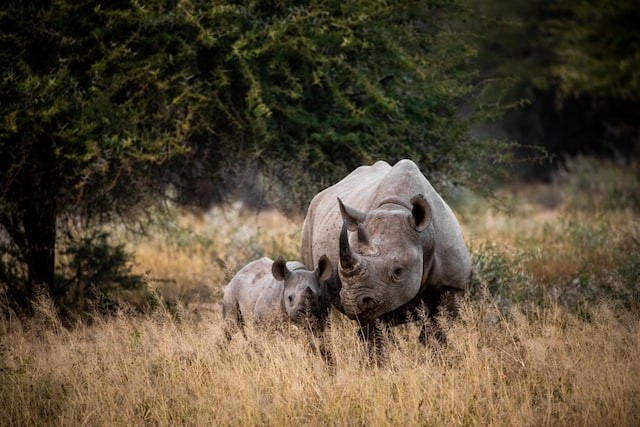More than half of the continent's remaining rhinos are already found on private property because rhino populations in central state-run parks are declining at unsustainable rates.
A new approach to rhino conservation

Up until the last ten years, South Africa's Kruger National Park was home to the majority of rhinos.
But over the past ten years, this state-run park has lost 76% of its white rhinos and 68% of its black rhinos, as per ScienceDaily.
On the other hand, over the same ten years, the number of white rhinos living on private land has increased steadily, in particular in South Africa.
At least the majority of the continents' rest rhinos are now protected by private rhino owners, and a growing number are also protected on communal lands.
Scientists from the University of Helsinki in Finland and the Universities of Stellenbosch and Nelson Mandela in South Africa have gathered publicly available rhino population statistics for African countries where rhinos occur, broken down by state, private, and communal land types where possible, in a new article published in Frontiers in Ecology and the Environment.
They mapped out a new course for rhino conservation while taking into account the effects of an impending shift in rhino conservation from public to private and communal lands.
Dr. Hayley Clements, the paper's author, explained that private and communal landowners in several southern and eastern African nations can make money from trophy hunting, wildlife tourism, and the trade in live animals, making it financially feasible to use their land for wildlife conservation as opposed to raising livestock.
However, according to study co-author Dr. Dave Balfour, the cost-benefit analysis of rhino conservation is altering.
This amount exceeds the amount that state parks can afford to spend per rhino or per unit of land that is conserved.
Furthermore, increased state transparency regarding rhino numbers and management is essential to figuring out where and how to conserve them.
Current information on rhino populations, poaching rates, and security costs can be used to identify and quantify long-term trends in rhino populations across different land tenure types, inform rhino conservation efforts, and gain public support.
Why Rhinos are near to extinction?
With fewer than 30,000 rhinos left in the wild today, rhinoceroses are a severely endangered species.
Over 500,000 people lived there at the turn of the 20th century, as per Helping Rhinos.
This sharp decrease in rhino population has been brought on by human activity.
The main threats to rhinos today are poaching and habitat loss. Initially, numbers declined due to hunting.
One of the main causes rhinos are still endangered today is poaching and the illegal trade in rhino horn, which has sharply increased since 2007.
Poaching is a lucrative industry, and organized criminal gangs are now well-prepared to locate and kill rhinos.
A rhino horn can sell for an astounding £200,000 or more.
Poaching can also be made more dangerous by domestic political and economic unrest.
The other main threat to rhino populations is habitat loss.
There is less space available for rhinos to thrive in because more and more land is being cleared for agriculture.
To feed and roam, rhinos require a sizable area.
Rhino populations' chances of effective breeding and retrieval will further decrease if they become fragmented and lack safe corridors to move through.
© 2026 NatureWorldNews.com All rights reserved. Do not reproduce without permission.





